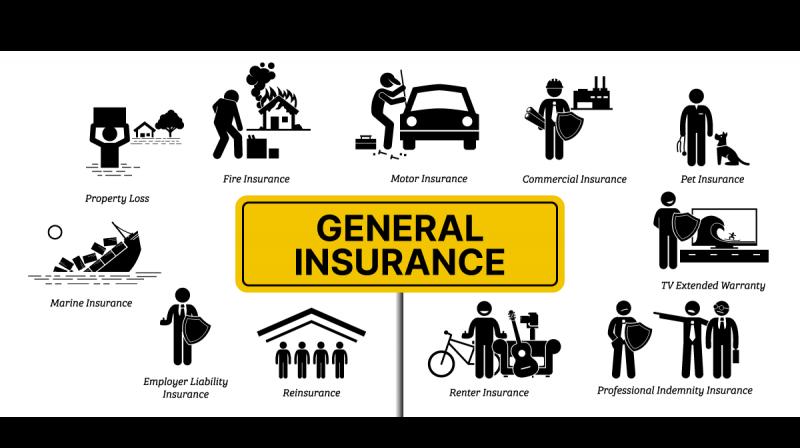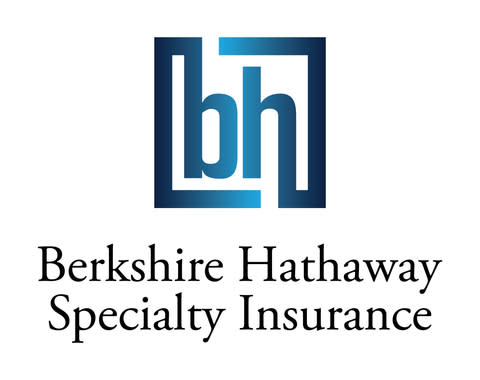Purchasing a home is a significant milestone, but it comes with the responsibility of ensuring that your investment is protected. One crucial aspect of this protection is securing the best home insurance rates. Proactively researching and understanding the factors that influence premiums is essential to avoid unexpected costs that could jeopardize your financial stability. This guide will provide a comprehensive overview of homeowners insurance, helping you navigate the complexities and secure affordable coverage tailored to your needs.
Toc
Understanding Homeowners Insurance

Homeowners insurance serves as a vital safety net, protecting your property and belongings against unforeseen events such as fires, storms, and theft. It’s essential to grasp the various types of coverage available to ensure you find the best house insurance rates suited to your situation.
The Importance of Understanding Your Coverage
Before diving into the specifics of coverage types, it’s important to recognize that understanding your policy is key to ensuring you have adequate protection. A well-informed homeowner is better equipped to make decisions that can lead to the best homeowners insurance rates.
Types of Coverage
Homeowners insurance typically encompasses several key components:
- Dwelling Coverage: Protects the physical structure of your home, including the roof, walls, and built-in appliances.
- Personal Property Coverage: Covers your belongings, such as furniture, electronics, and clothing, against loss or damage.
- Liability Coverage: Offers protection if someone is injured on your property or if you accidentally cause damage to someone else’s property.
- Additional Living Expenses (ALE): Covers living costs, such as hotel bills and restaurant meals, if your home becomes uninhabitable due to a covered loss.
Additionally, it’s crucial to distinguish between named peril and open peril policies. Named peril policies cover only specific risks, while open peril policies cover all risks unless explicitly excluded. By understanding these differences, you can actively seek out the homeowners insurance policy that best aligns with your specific needs and potential risks.
Importance of Replacement Cost
When evaluating home insurance, knowing your home’s replacement cost is paramount. This figure reflects the amount needed to rebuild your home from scratch, including labor and materials, rather than its market value. Ensuring your policy reflects the correct replacement cost is essential for obtaining the best value homeowners insurance. If your home is underinsured, you may face significant out-of-pocket expenses in the event of a disaster.
Factors Affecting Your Premium

Several factors can significantly affect your homeowners insurance best rates. By understanding these elements, you can make informed decisions to secure the best and cheapest home insurance.
Geographic Location
Your home’s location is a primary determinant of your insurance rates. Factors such as:
- Natural Disaster Risk: Areas prone to hurricanes, earthquakes, or floods often have higher premiums. For example, homes in coastal regions may face additional costs due to the risk of storm surges and flooding.Insurance companies utilize sophisticated risk maps, often based on historical data and predictive models, to assess the likelihood of various perils in specific locations. These maps consider factors like proximity to fault lines for earthquakes, hurricane tracks for coastal areas, and historical crime statistics for theft risk. This data helps insurers tailor premiums based on the unique risks associated with each geographic location.
- Crime Rates: Homes in high-crime areas may face increased rates due to higher theft risks. Insurers assess the likelihood of property crimes in your neighborhood when determining your premiums.However, it’s important to note that while rural areas often have lower crime rates, they can sometimes face higher premiums due to factors like limited access to fire departments or ambulance services. In such cases, insurers may assess the risk of slower response times and adjust premiums accordingly.
- Local Building Codes: Stricter building regulations can also influence insurance costs. Homes built to higher safety standards may qualify for lower rates.
The increasing frequency and severity of extreme weather events, driven by climate change, are significantly impacting homeowners insurance premiums. As insurers grapple with higher claims payouts due to hurricanes, wildfires, and floods, they are adjusting premiums to reflect these rising risks. This trend is particularly pronounced in coastal regions and areas prone to wildfires, where premiums have seen significant increases in recent years.
Home Characteristics
The specific features of your home can also play a critical role in determining your insurance costs. Consider the following:
- Age of the Home: Newer homes often qualify for lower rates due to updated building standards and materials. Older homes may require additional inspections and updates, potentially increasing premiums.It’s important to note that while older homes might require more maintenance, well-maintained older homes with updated features, like a modern electrical system or a new roof, can sometimes qualify for lower premiums than newer homes with minimal upgrades. Insurers often consider the overall condition and safety of the home rather than just its age.
- Construction Materials: Homes built with fire-resistant materials, such as brick or stucco, may receive discounts. Insurance companies often provide incentives for homeowners who invest in safer building materials.
- Safety Features: Installing safety measures like smoke detectors, burglar alarms, and security cameras can help lower your premiums. These systems not only protect your home but also demonstrate to insurers that you are taking proactive steps to mitigate risk.
The integration of smart home technology is creating new opportunities for homeowners to reduce their insurance premiums. Features like smart security systems, water leak detection, and connected smoke detectors can demonstrate proactive safety measures and contribute to lower rates. Insurance companies are increasingly offering discounts for homes equipped with these technologies, recognizing their potential to mitigate risks and reduce claims.
1. https://kiahaiduong-5s.com/archive/1650/
2. https://kiahaiduong-5s.com/archive/1653/
3. https://kiahaiduong-5s.com/archive/1652/
Personal Factors
Your personal history and financial profile can also impact your home insurance rates. Key considerations include:
- Credit Score: A higher credit score can lead to lower premiums, as insurers view it as a sign of responsibility. Many insurance companies use credit-based insurance scores to assess risk.For instance, a homeowner with a credit score of 700 might pay an average of $1,500 per year for homeowners insurance, while someone with a score of 600 might pay $1,800 or more, reflecting a 20% increase in premiums due to perceived higher risk.
- Claims History: A history of frequent claims can increase your rates. If you’ve filed multiple claims in a short period, insurers may consider you a higher risk, resulting in higher premiums.
- Policy Choices: Opting for higher deductibles can reduce your monthly premiums. However, it’s essential to ensure you can afford the deductible in case of a claim.
To secure the best value homeowners insurance, maintaining a good credit score and minimizing claims is essential. Regularly monitoring your credit report can help you identify areas for improvement.
Strategies for Finding the Best Home Insurance Rates
Finding the best home insurance rates requires proactive research and comparison. Here are some effective strategies:
Shop Around and Compare Quotes
One of the most effective ways to secure the best house insurance rates is to compare quotes from multiple insurers. Utilize online comparison tools to easily view and analyze different offers. Working with independent insurance agents can also provide you with access to various options, ensuring you find the most competitive rates. It’s important to gather quotes from at least three different providers to get a comprehensive view of the market.
Take Advantage of Discounts
Many insurance providers offer various discounts that can significantly lower your premiums. Common discounts include:
- Safety Features: Installing security systems or smoke detectors can lead to substantial savings on your policy. For example, installing a monitored smoke detector system can often lead to a 5% discount on your premium.
- Bundling Policies: Combining your home and auto insurance can yield significant savings. For instance, a homeowner who bundles their home and auto insurance with the same provider might receive a 10% discount on their home insurance premium.
- Loyalty Discounts: Long-term customers may qualify for reduced rates. Some insurers reward loyalty with discounts for staying with them for an extended period.
To maximize your savings, inquire about available discounts and ensure you meet the eligibility requirements. Additionally, consider asking your insurer about any lesser-known discounts that may apply to your situation.
Negotiate Your Premium
While insurance quotes may not be directly negotiable, there are still ways to lower your premiums. Consider the following options:
- Increase Your Deductible: Opting for a higher deductible can lead to lower monthly payments. Just ensure that you can afford the deductible amount in case you need to file a claim.
- Reduce Coverage Limits: If your current coverage exceeds your needs, adjusting your limits can save money. However, be cautious not to underinsure your property.
- Explore Alternative Policies: Look into different types of policies that may offer better rates. For example, some insurers offer specialized policies for older homes or homes in unique locations.
By being proactive and negotiating your coverage, you can secure the best and cheapest home insurance for your situation.
Tips for First-Time Homebuyers
As a first-time homebuyer, understanding the nuances of homeowners insurance is crucial. Here are some practical tips to guide you:
Get Pre-Approved for a Mortgage
Before diving into the insurance market, obtaining pre-approval for a mortgage can help clarify your budget. This step allows you to determine appropriate coverage limits and ensures you’re not caught off guard by unexpected costs. Pre-approval gives you a clearer picture of your financial situation, which can also aid in discussions with insurance agents.
Consider Bundling Policies
Bundling your home and auto insurance policies can lead to significant savings. Many insurers offer discounts for bundled coverage, simplifying your insurance management while also reducing costs. This approach not only saves money but also streamlines your payments and reduces the number of policies you need to manage.
Review Coverage Regularly
As your life circumstances change, so too may your insurance needs. It’s essential to review your homeowners insurance policy annually to ensure it aligns with your current situation. This may involve adjusting coverage limits, adding or removing riders, or seeking new discount opportunities. Regular reviews can help you stay on top of your coverage and ensure you’re not paying for unnecessary options.
Exploring Additional Savings Opportunities


1. https://kiahaiduong-5s.com/archive/1653/
2. https://kiahaiduong-5s.com/archive/1651/
3. https://kiahaiduong-5s.com/archive/1650/
In addition to the tips mentioned earlier, there are other ways you can save on your home insurance premiums. Being proactive about these opportunities can lead to significant savings over time.
Implement Home Safety Measures
Investing in home safety measures can yield long-term savings on your insurance premiums. Consider installing:
- Security Systems: A monitored security system can deter burglars and provide peace of mind.
- Smoke Detectors and Carbon Monoxide Alarms: These devices are essential for safety and can lead to discounts.
- Fire Extinguishers: Having accessible fire extinguishers can also demonstrate your commitment to safety.
Take Advantage of Professional Affiliations
If you are a member of certain professional organizations, such as alumni associations or industry groups, you may be eligible for additional discounts on your home insurance. Many insurers offer special rates for members of specific professions or organizations.
Home Renovation Discounts
If you’ve recently renovated or upgraded your home, such as replacing the roof or upgrading the electrical system, you may be able to take advantage of discounts for these improvements. Insurers often reward homeowners who invest in upgrades that enhance safety and resilience.
Senior Citizen Discounts
Many insurance providers offer discounts to homeowners who are of a certain age, typically 55 or older. If you fall into this category, be sure to inquire about potential savings.
Frequently Asked Questions (FAQ)
What is the average cost of homeowners insurance?
The average cost of homeowners insurance varies widely based on factors such as location, home value, and coverage levels. As of 2024, the national average cost is approximately $1,584 per year or $132 per month. However, your individual rates may differ based on your unique circumstances.
How can I lower my homeowners insurance premium?
Several strategies can help reduce your homeowners insurance premium, including taking advantage of discounts, improving your credit score, increasing your deductible, and bundling your home and auto insurance policies. Regularly reviewing your policy can also uncover opportunities for savings.
What should I do if I need to file a homeowners insurance claim?
If you need to file a claim, contact your insurance provider promptly. They will guide you through the claims process and inform you about necessary documentation. Keeping detailed records of any related expenses is also essential.
Conclusion
Securing the best home insurance rates requires thorough research, comparison, and an understanding of the factors influencing premiums. By exploring the essentials of homeowners insurance, considering key rate drivers, and taking advantage of discounts and negotiation opportunities, you can obtain the coverage you need at a price that fits your budget. As a first-time homebuyer, being proactive and regularly reviewing your policy can help ensure you’re getting the best value homeowners insurance for your investment. Don’t hesitate to shop around, compare quotes, and utilize available resources to secure the best rates for your new home. With the right approach, you can protect your investment while maintaining financial peace of mind.











